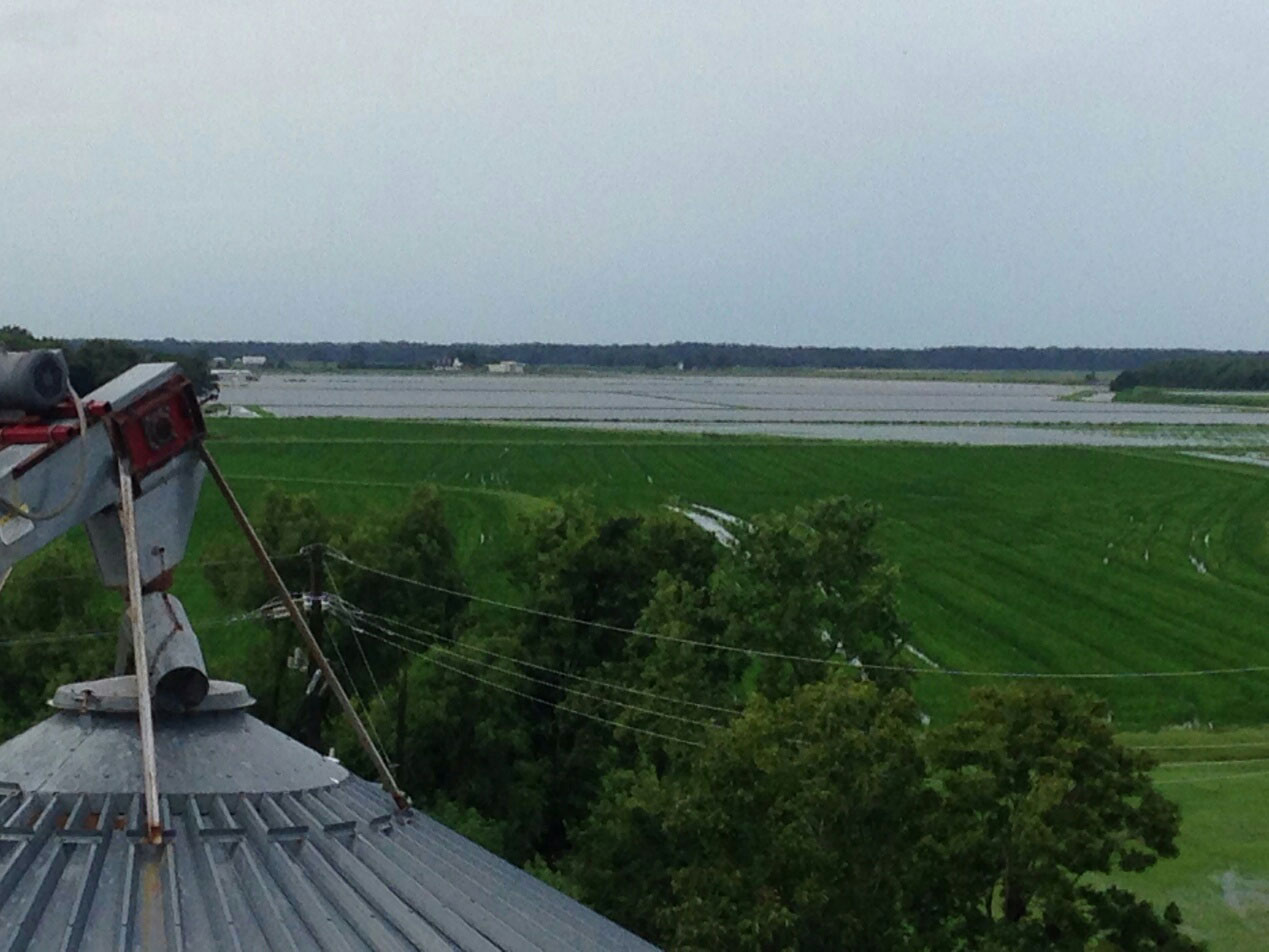 The view Saturday from atop Allen McClain's grain bins south of Abbeville.
The view Saturday from atop Allen McClain's grain bins south of Abbeville.
Aug 16, 2016
BATON ROUGE, LA -- More than 20 inches of rain have fallen in southwest Louisiana since last week, and with more on the way, the full scope of damage due to historic flooding in the area won't become clear until the water recedes.
"We're still in the stabilization and rescue mode now," said Louisiana Agriculture Commissioner Mike Strain. "Once the water recedes we'll begin doing analysis. The feds will join us with teams on the ground doing assessments."
As of noon today, the following parishes are included on the Federal Emergency Management Agency (FEMA) Louisiana disaster declaration: Acadia, Ascension, East Baton Rouge, East Feliciana, Iberia, Lafayette, Livingston, Pointe Coupee, St. Helena, St. Landry, Tangipahoa, and Vermilion. Twenty-nine parishes have requested disaster declarations.
“Estimating the value of damage to the rice crop in southwest Louisiana will not be easy since, at this point, everything seems to be constantly changing,” said Dustin Harrell, Research Agronomist & Extension Rice Specialist at Louisiana State University.
After talking with extension agents in every affected parish, and using an average yield value of 7,100 lb/acre and an average rice price of $11 per cwt, Harrell came up with what he called “a highly speculative estimate” of approximately $14.3 million in losses for the southwest Louisiana rice crop. This estimate does not include potential ratoon rice losses.
Rice farmers throughout the affected areas report varying degrees of damage. Kevin Berken, from Lake Arthur, is pumping water off his rice and remains optimistic that his crop will be saved, although he thinks his second crop is "toast or teal [duck] food.”
Fred Zaunbrecher estimated “between 18-20 inches of rain” has fallen at his farm in Duson. “My brother had to evacuate his home, and my son and his buddies have been running rescue missions in south Lafayette with their gator tail boat.”
Donald Berken, from Welsh, relayed a conversation with Congressman Charles Boustany’s staff who said the Army Corp of Engineers responsible for lock operations had given assurances that all of the locks in the area are under constant monitoring but cannot remain open continuously due to tidal activity. Berken adds, “My area went through a similar event in May of 1980. This appears to be as bad if not worse due to more widespread rain.”
“We were having average yield, some high some low, with good quality,” said Jackie Loewer, from Branch. “Now we will have less than average yield because of down conditions and lower quality because of sprouted rice.”
It has been estimated that about 80 percent of the southwest Louisiana crop had been harvested prior to the flooding, but that of the 20 percent still in the field, 20 percent of that would likely be lost due to the flooding.
None of the rice mills in the state have reported flood-related disruption, although transportation for, and safety of, employees is obviously a top concern according to Robert Trahan, director of sales and business development at Falcon Rice Mill in Crowley, and chairman of the USA Rice Millers’ Association.
USA Rice’s Randy Jemison and Carrie Castille were the only agriculture commodity representatives actively participating in a FEMA National Business Emergency Operations Center (NBEOC) coordination call today. They shared the initial impact of the flooding on the rice industry and will remain in contact with that group.
USA Rice will continue to monitor this situation and provide updates as they are reported.